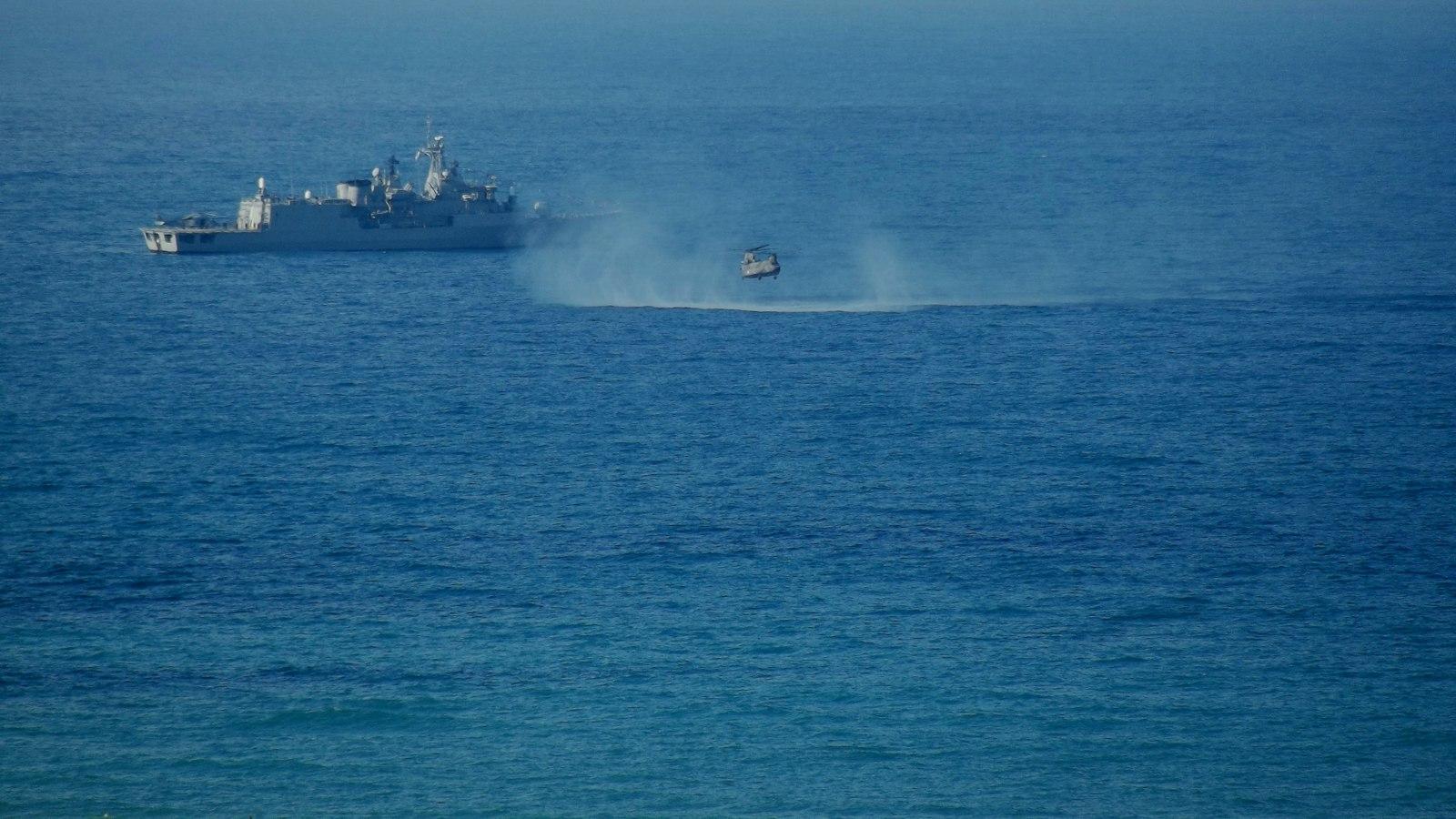Unbeknownst to many, behind the towering naval vessels and the awe-inspiring defense systems of the Indian Navy lies a lesser-known force, equally vital and indispensable – the Indian Navy Civilian. While the spotlight often shines on naval officers in their crisp uniforms, it is the hidden heroes of the civilian cadre who work relentlessly behind the scenes, shaping the maritime might of India. From engineers to accountants, doctors to electricians, this diverse and skilled group of individuals composes the backbone of the Indian Navy, propelling it towards the horizon of excellence. In this article, we embark on a captivating journey into the world of the Indian Navy Civilian, shedding light on their invaluable contribution and the remarkable stories of their unwavering dedication.
Indian Navy Civilian Roles and Responsibilities: A Comprehensive Overview
The Indian Navy plays a crucial role in safeguarding the nation’s maritime interests and ensuring security at sea. While the Navy’s operational units consist of sailors and officers, there are also various civilian roles within the organization that form an integral part of its functioning. These civilian personnel contribute their expertise and skills in diverse fields to support the Navy’s mission.
Here, we provide a comprehensive overview of the Indian Navy’s civilian roles and responsibilities to highlight their vital contribution. These roles encompass a wide range of domains including administration, engineering, logistics, medical services, education, research, and technical support. Civilian employees in the Navy may work on-shore at Naval bases, as well as on-board naval vessels or aircraft. They collaborate closely with the uniformed personnel to ensure smooth operations and the overall effectiveness of the Indian Navy.
Highlighted Civilian Roles and Responsibilities
1. Administration: Civilian staff in administrative roles cover areas such as personnel management, finance, procurement, legal affairs, and public relations. They ensure efficient functioning of various departments and assist in the smooth execution of day-to-day operations.
2. Engineering: Civilian engineers play a pivotal role in maintaining and optimizing the Navy’s infrastructural assets, including ships, submarines, aircraft, and dockyards. They contribute to the design, construction, repair, maintenance, and quality control of these assets, implementing cutting-edge technologies to enhance performance and reliability.
3. Logistics: The Navy’s logistics department relies heavily on civilian professionals for material procurement, inventory management, warehousing, transportation, and supply chain operations. Their expertise ensures timely availability of essential resources and supports seamless logistics, both during peacetime and in times of crisis.
4. Medical Services: The Indian Navy provides comprehensive medical care to its personnel, and civilian doctors, nurses, and other healthcare professionals play a significant role in delivering healthcare services. They work in naval hospitals, clinics, and medical units, handling a wide range of tasks from primary care to specialized treatments.
5. Education and Research: Civilian academic faculty and researchers are instrumental in imparting training and education to naval personnel. They develop and teach courses on various subjects, ranging from navigation to advanced technical skills. Additionally, civilian scientists and researchers contribute to important research initiatives and technological advancements within the Navy.
These are just a few examples of the diverse roles and responsibilities of the civilian workforce within the Indian Navy. Each role is vital in ensuring the Navy operates effectively, and the dedicated efforts of these individuals greatly contribute to the maritime security and defense of the nation.

Enhancing Efficiency: Key Steps to Optimize Indian Navy Civilian Operations
Enhancing efficiency within the Indian Navy’s civilian operations is crucial to ensure smooth and effective functioning of the organization. To achieve this, there are several key steps that can be taken to optimize processes, improve productivity, and maximize output. These steps include:
- Streamline Communication Channels: Establishing clear lines of communication between different departments and personnel is essential to minimize delays and misunderstandings. By implementing efficient communication systems and encouraging frequent collaboration, the Indian Navy can enhance coordination and decision-making processes.
- Implement Technology Solutions: Embracing modern technology can greatly enhance the efficiency of civilian operations. From automated data management tools to advanced scheduling software, integrating technology into daily routines can streamline administrative tasks, reduce manual errors, and improve overall productivity.
- Optimize Resource Allocation: Conducting regular assessments of resource utilization is key to identifying areas where improvements can be made. By analyzing data on manpower, equipment, and facilities, the Indian Navy can allocate resources more effectively, ensuring they are utilized to their full potential.
- Invest in Employee Development: Providing training and professional development opportunities for civilian staff can significantly enhance their skills and knowledge. By enhancing the capabilities of the workforce, the Indian Navy can unlock their full potential, leading to improved performance and efficiency.
By implementing these essential steps, the Indian Navy can optimize civilian operations, enhancing overall efficiency and contributing to the organization’s success. Continual assessment, improvement, and investment in the development of its workforce will ensure the Indian Navy remains a highly effective and efficient force.

Promoting Collaboration: Building Stronger Ties between Indian Navy Civilian and Military Personnel
In today’s rapidly changing world, the need for effective collaboration between civilian and military personnel in the Indian Navy is becoming increasingly crucial. Recognizing the importance of harmonizing efforts and maximizing resources, initiatives have been launched to foster greater integration and collaboration between both groups. By fostering a culture of teamwork, innovation, and shared goals, the Indian Navy aims to achieve even greater levels of efficiency and effectiveness.
To facilitate stronger ties, the Indian Navy has established various channels and platforms for communication and coordination. Regular meetings, workshops, and training sessions are organized to ensure that civilian and military personnel have ample opportunities to interact, share insights, and develop a deeper understanding of each other’s roles and challenges. By promoting an atmosphere of mutual respect and understanding, the Navy aims to bridge any gaps and forge a united front.
- Inclusive decision-making: The Navy encourages active participation from both civilian and military personnel in the decision-making process. By involving all stakeholders, fresh perspectives and innovative ideas can be incorporated into strategic planning, ultimately leading to more effective outcomes.
- Joint training programs: To enhance collaboration and build trust, joint training exercises are organized where civilian and military personnel work together to tackle simulated scenarios. This promotes teamwork, strengthens interpersonal relationships, and fosters a seamless integration of skills, knowledge, and expertise.
- Knowledge sharing initiatives: The Navy facilitates the sharing of knowledge and best practices between civilian and military personnel through organized seminars, workshops, and online platforms. This exchange not only improves overall understanding but also enhances the collective capabilities of the organization.
| Improved Operational Efficiency | Enhanced Resource Allocation | Increased Innovation |
|---|---|---|
| By leveraging the diverse skill sets of both civilian and military personnel, the Indian Navy can streamline its operations, leading to improved efficiency in safeguarding national interests. | Collaboration allows for better allocation of limited resources, optimizing their use and ensuring effective utilization for various projects and missions. | When civilian and military personnel collaborate, they bring together different perspectives, promoting innovative approaches to problem-solving and enhancing the Navy’s ability to adapt to evolving challenges. |
The Indian Navy firmly believes that by nurturing collaboration and building stronger ties between civilian and military personnel, it can reinforce its capabilities and strengthen its commitment to national security. This inclusive approach fosters an environment where everyone can contribute their unique expertise, ensuring that the Navy remains at the forefront of maritime excellence.

Strengthening Skill Development: Recommendations to Enhance Training and Professional Growth for Indian Navy Civilian Staff
Recommendations to Enhance Training and Professional Growth for Indian Navy Civilian Staff
The Indian Navy Civilian staff plays a crucial role in the efficient functioning and support of the naval operations. To ensure their skills are continually developed and their professional growth is nurtured, several recommendations can be implemented. These measures aim to optimize their potential, enhance efficiency, and create a culture of continuous learning within the organization.
1. Customized Skill Development Programs: Tailoring training programs to the specific roles and responsibilities of each civilian staff member can significantly improve their effectiveness. By identifying key skill gaps and providing targeted training modules, individuals can acquire specialized expertise that aligns with their job requirements. This personalized approach will not only enhance their current performance but also equip them with the necessary skills for future career growth opportunities.
- Example: Conducting workshops on project management for civilian staff involved in infrastructure development projects.
- Example: Organizing customer service training for personnel working in naval base administrative offices.
2. Mentoring and Peer Learning: Establishing a mentorship program within the Indian Navy Civilian staff can foster knowledge-sharing and professional development. Seasoned employees can act as mentors, offering guidance and support to their junior counterparts. This not only helps in transferring valuable experience and skills but also encourages a collaborative environment where employees can learn from each other’s expertise.
| Benefits | Description |
|---|---|
| Enhanced Job Satisfaction: | Mentorship provides a sense of guidance and support, leading to greater job satisfaction among civilian staff. |
| Improved Performance: | Mentees receive valuable feedback, enabling them to enhance their skills and excel in their roles. |
| Networking Opportunities: | Mentorship fosters connections, allowing civilian staff to expand their professional network within the organization. |
Wrapping Up
As we delve into the depths of the Indian Navy, we uncover a hidden gem that often goes unnoticed: the Indian Navy Civilian force. While the sailors take center stage, it is the civilian personnel who play an equally crucial role in ensuring the smooth functioning of this mighty maritime powerhouse.
With quiet determination, the Indian Navy Civilian force acts as the backbone of the naval operations, providing unwavering support in a vast range of responsibilities. From logistics and administration to technical expertise and research, their silent contributions are the unsung heroes of the fleet.
In sync with their naval counterparts, these dedicated civilians display an unyielding commitment to safeguarding the nation’s maritime interests. Seamlessly blending into the blue fabric of the Indian Navy, their collective efforts serve as a testament to their unwavering allegiance and their indispensable value.
As each civilian plays their specialized role with proficiency, they craft an intricate tapestry of expertise that enhances navy operations. Working hand-in-hand with their naval comrades, they demonstrate the power of unity, fostering an environment where collaboration thrives.
Every dockyard, every naval base, and every ship is filled with these unsung heroes, diligently ensuring that the Indian Navy carries out its duties with the utmost precision and efficacy. Individually they may be invisible, but together they create an unstoppable force to be reckoned with.
Their contributions extend beyond the confines of naval boundaries, as they embrace the spirit of the seas and champion humanitarian efforts during disaster relief missions. Displaying remarkable resilience and compassion, they extend a helping hand when it is needed the most, embodying the qualities that make the Indian Navy Civilian force a beacon of hope.
The Indian Navy Civilian force stands as a living testament to the unwavering commitment, untiring dedication, and unflinching resolve that underpin the naval might of India. As we conclude our exploration of this hidden world, we are left with a deep appreciation for the silent warriors who toil behind the scenes, ensuring that the waves of success reverberate through the Indian Navy.
Invisible heroes, yet essential pillars, the Indian Navy Civilian force silently stands tall, leaving an indelible mark on the nation and its maritime history. Their contribution may go unnoticed by some, but their unwavering service resonates in every successful mission, in every proud Indian heart, and in the eternal depths of the mighty Indian Navy.

